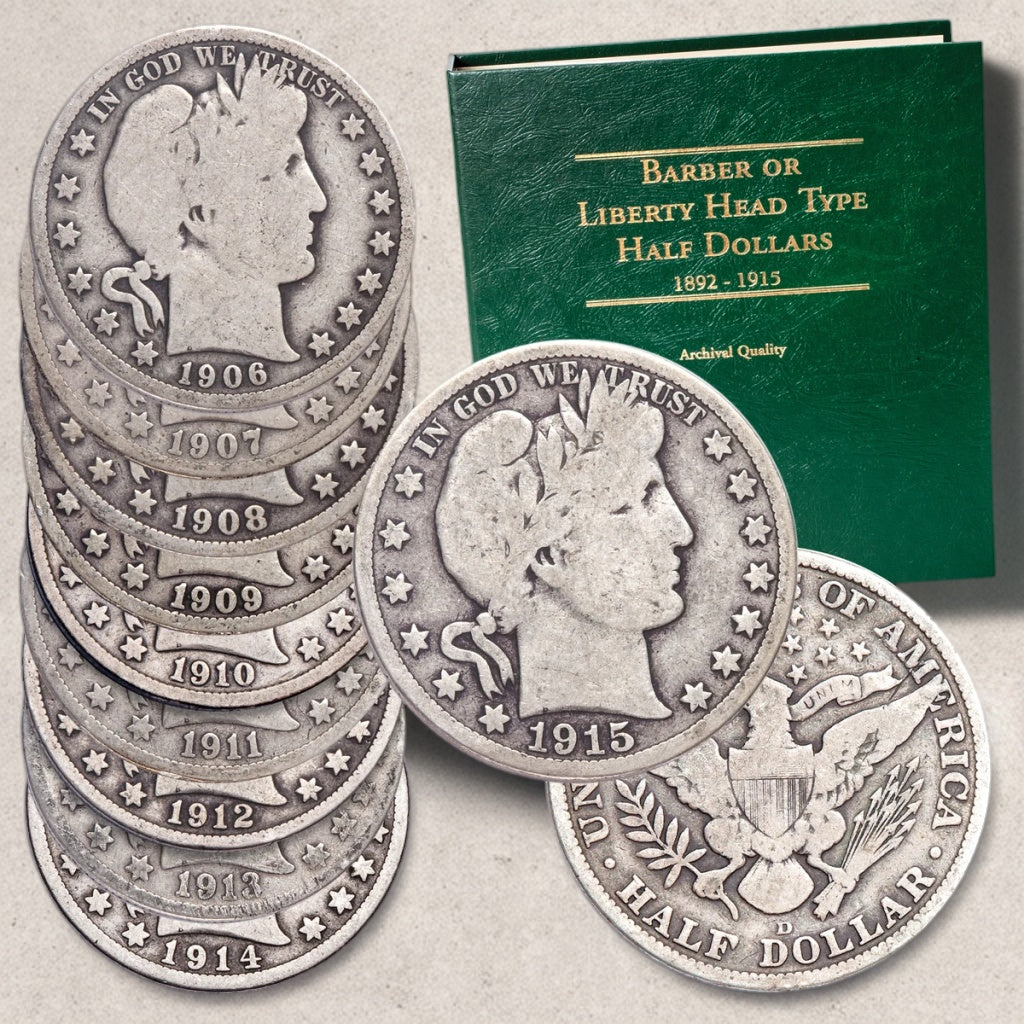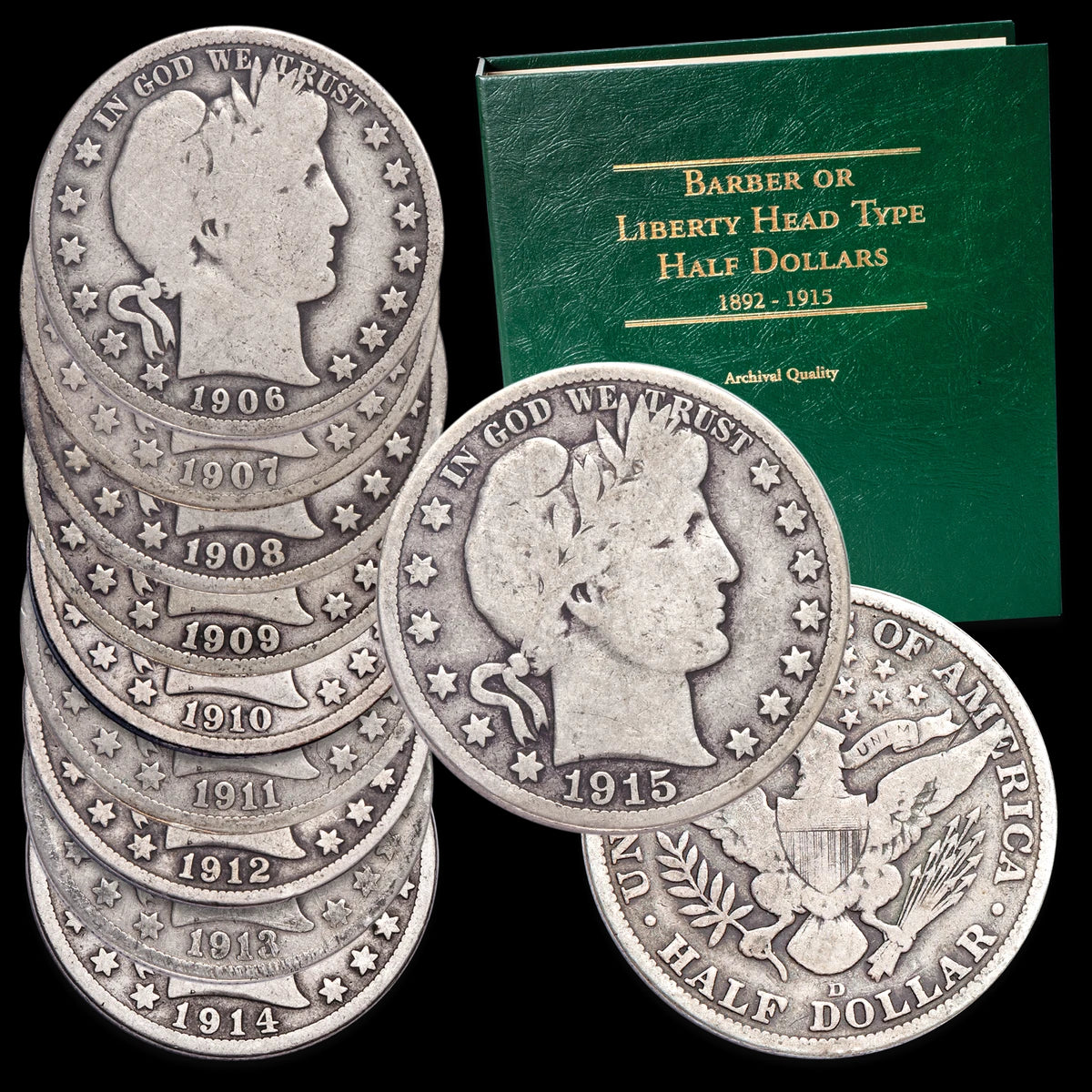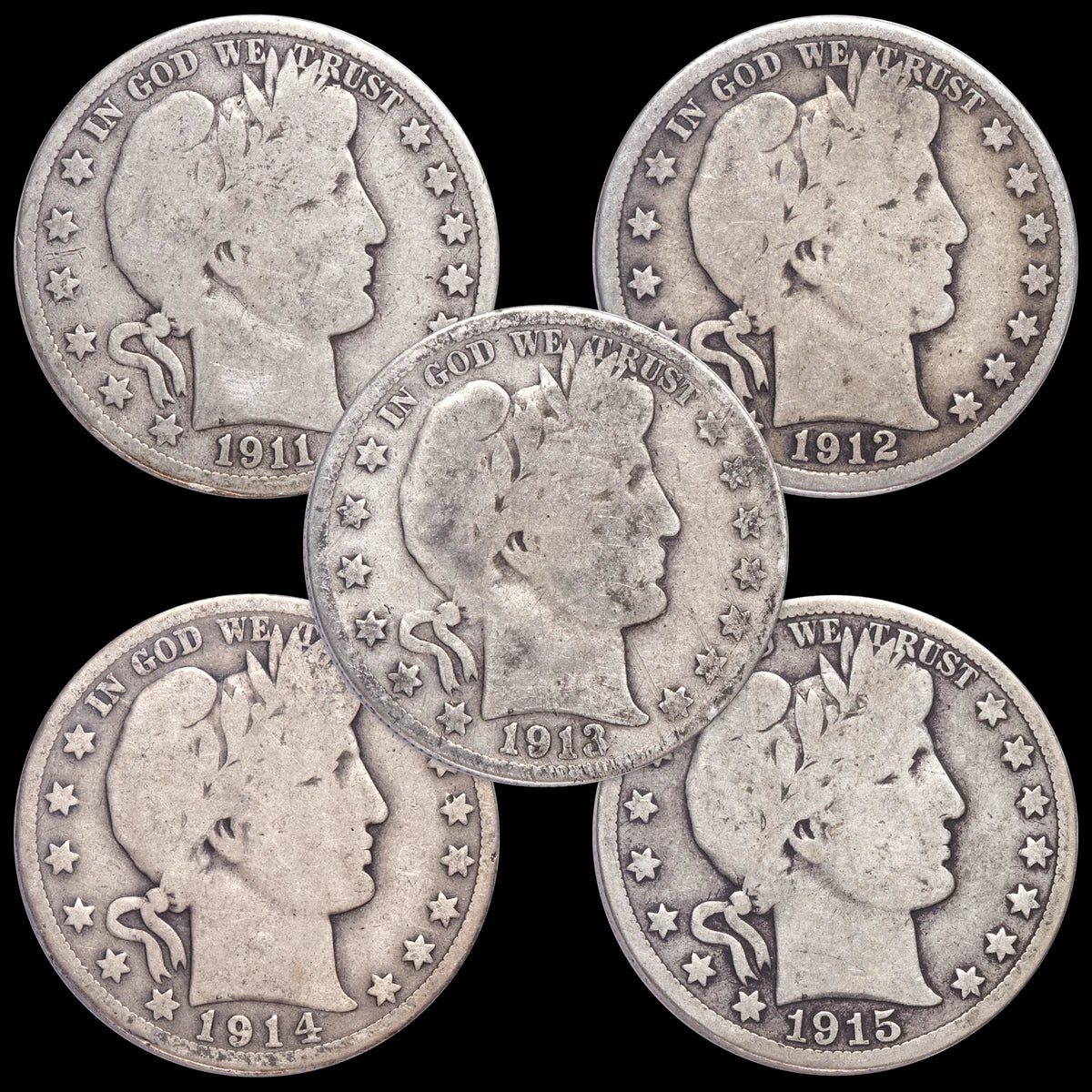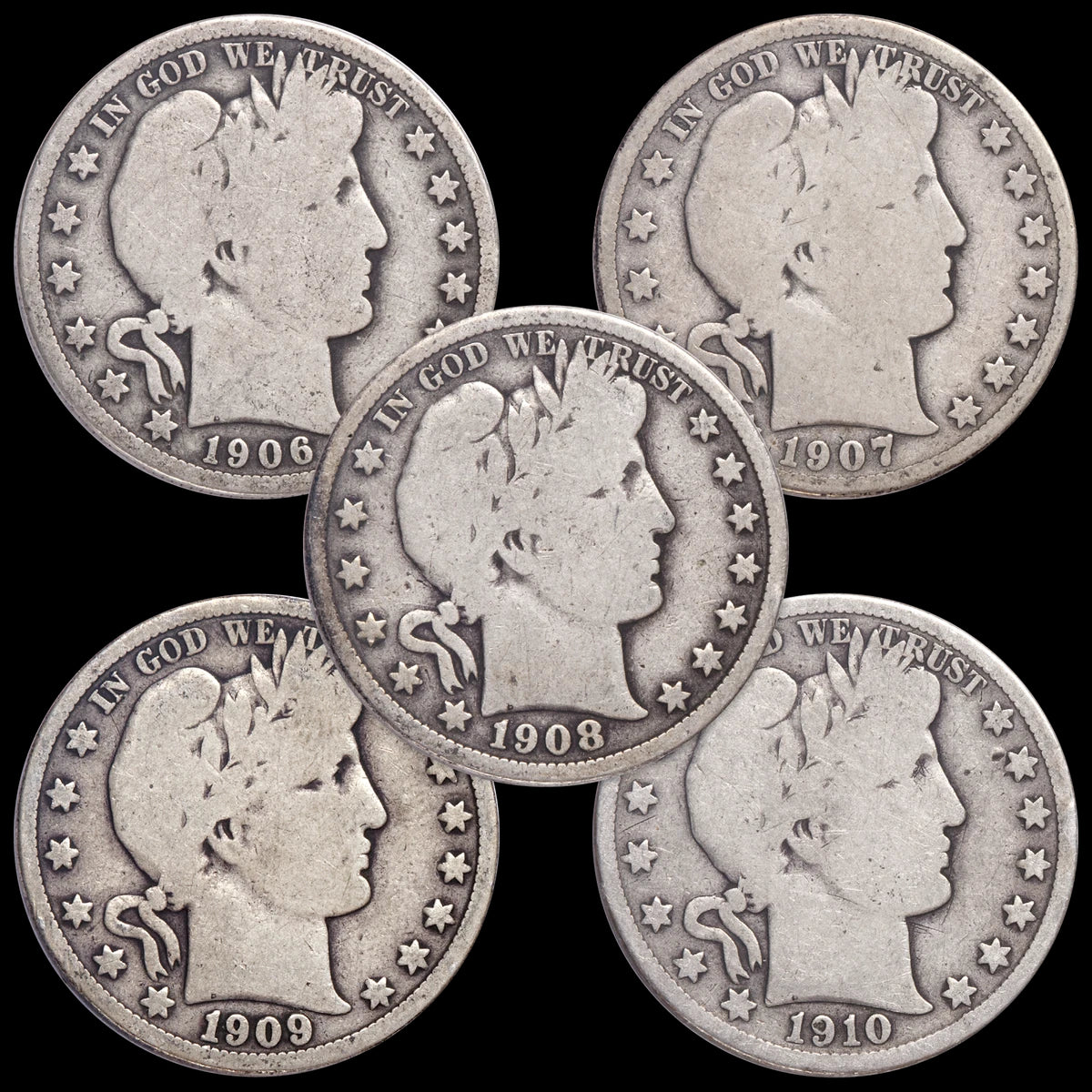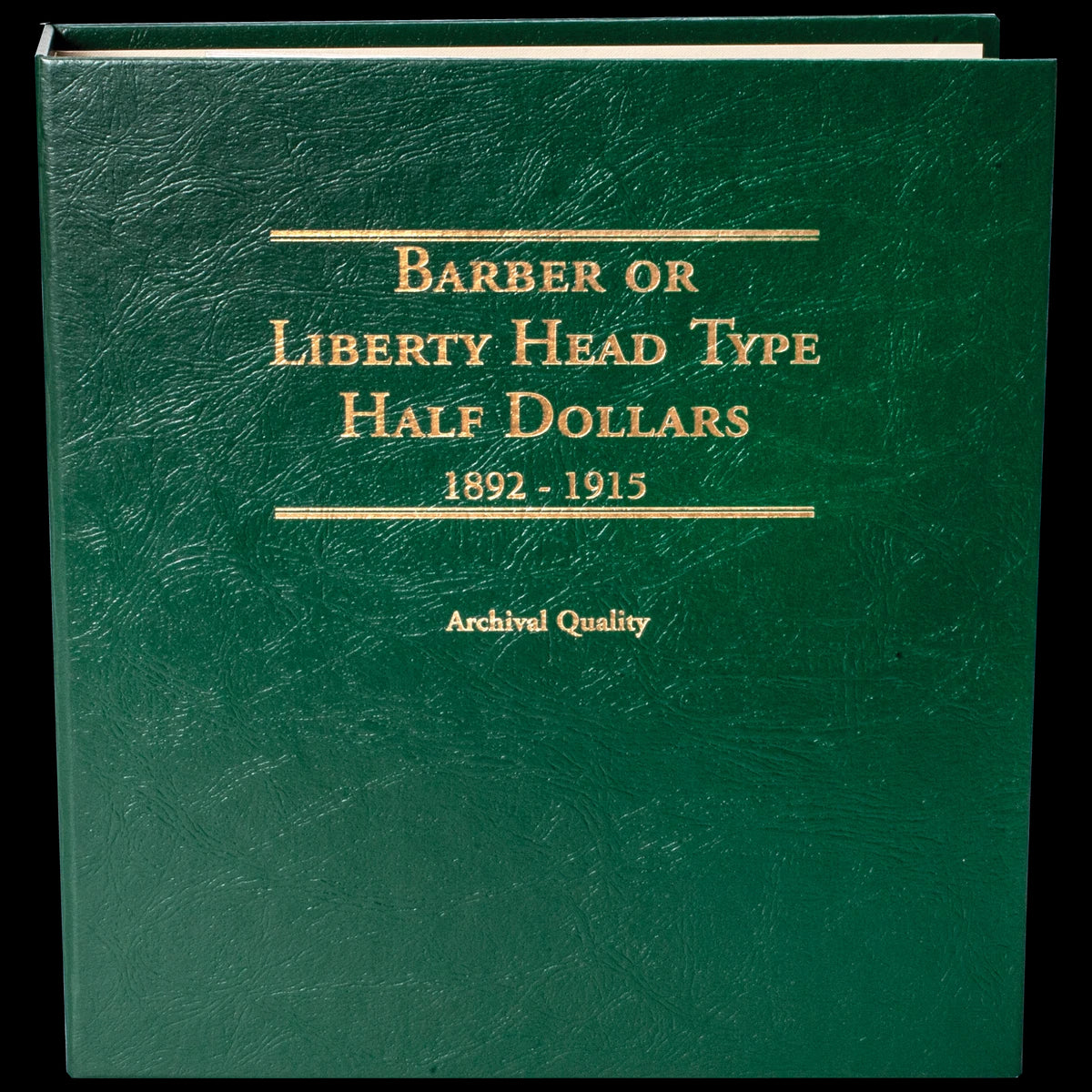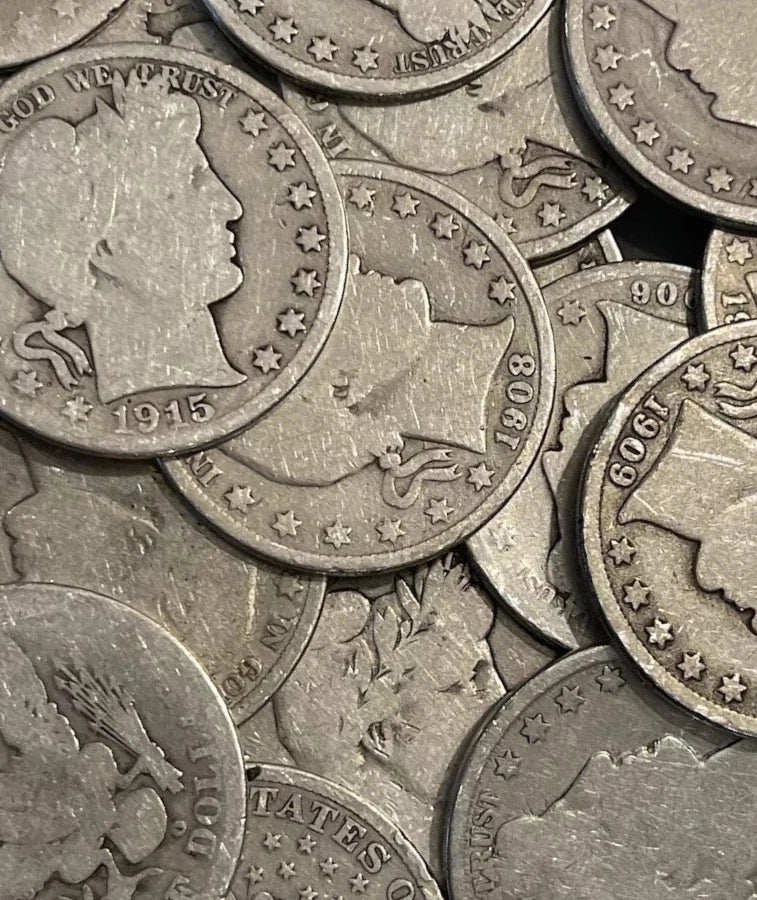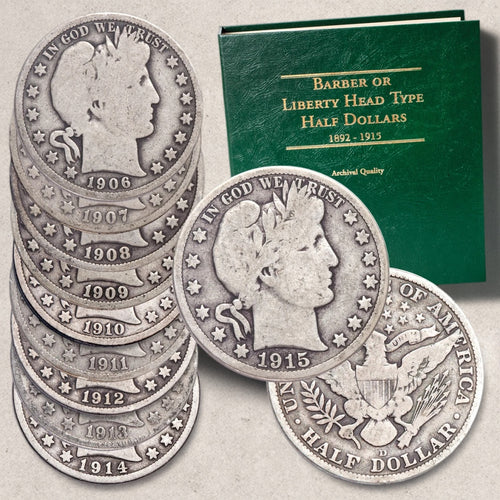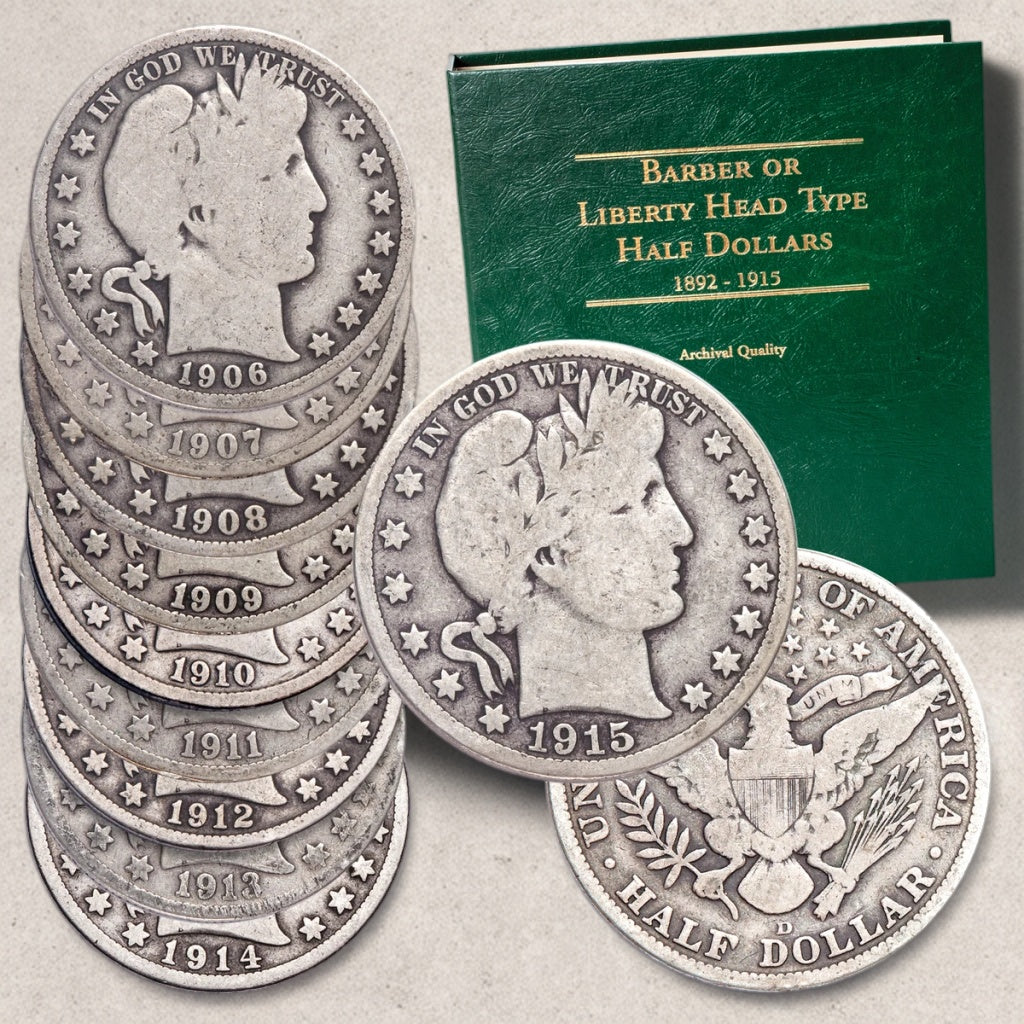
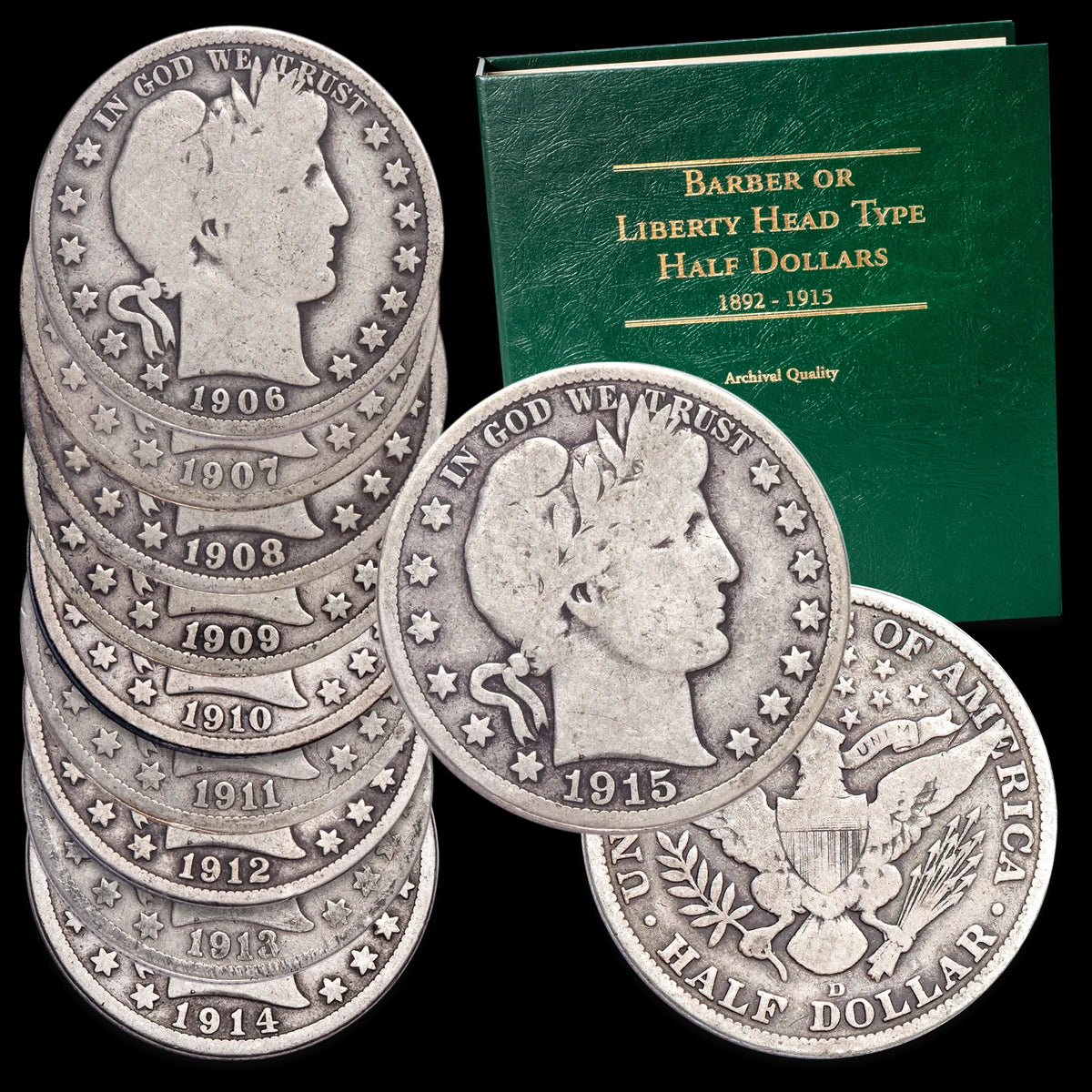
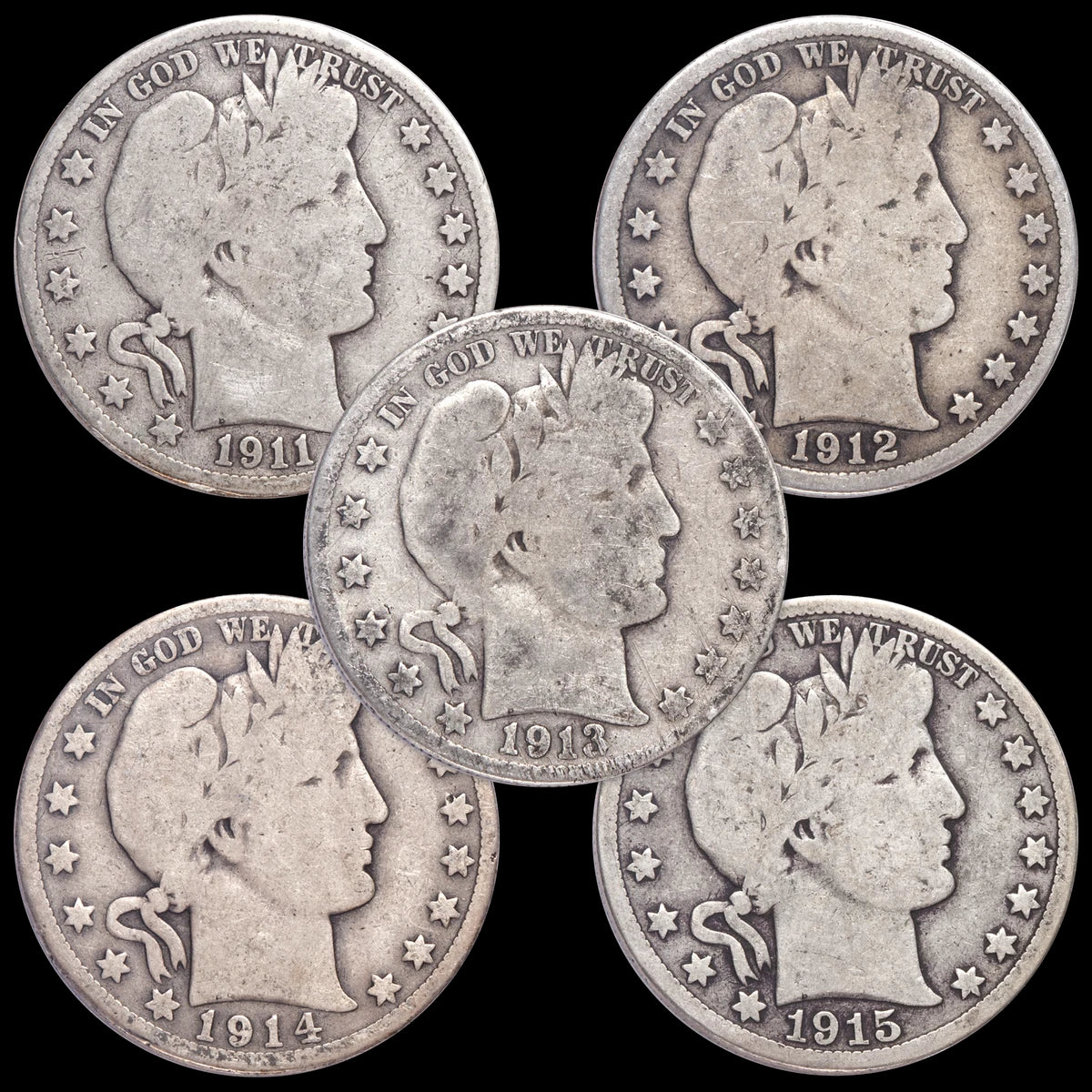
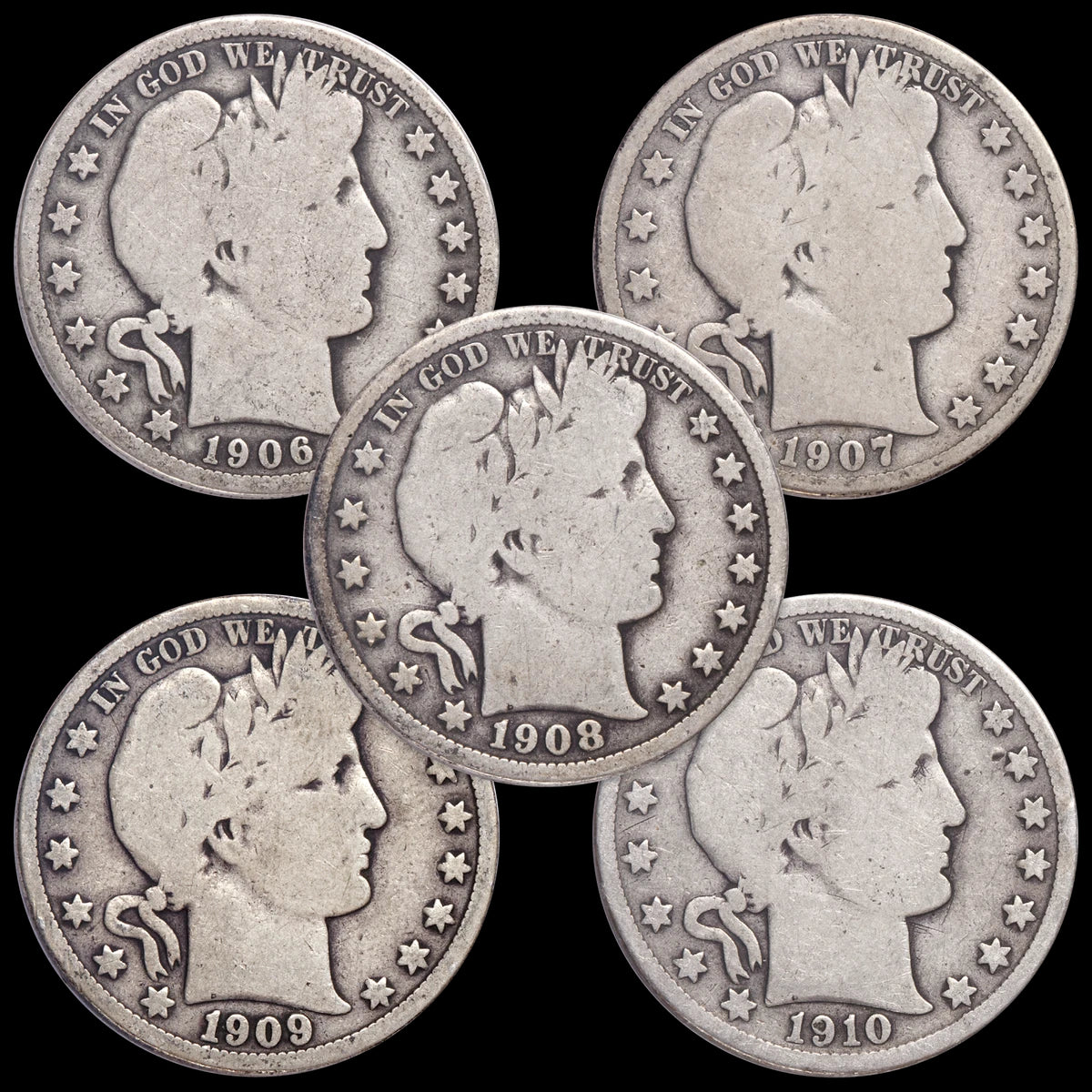
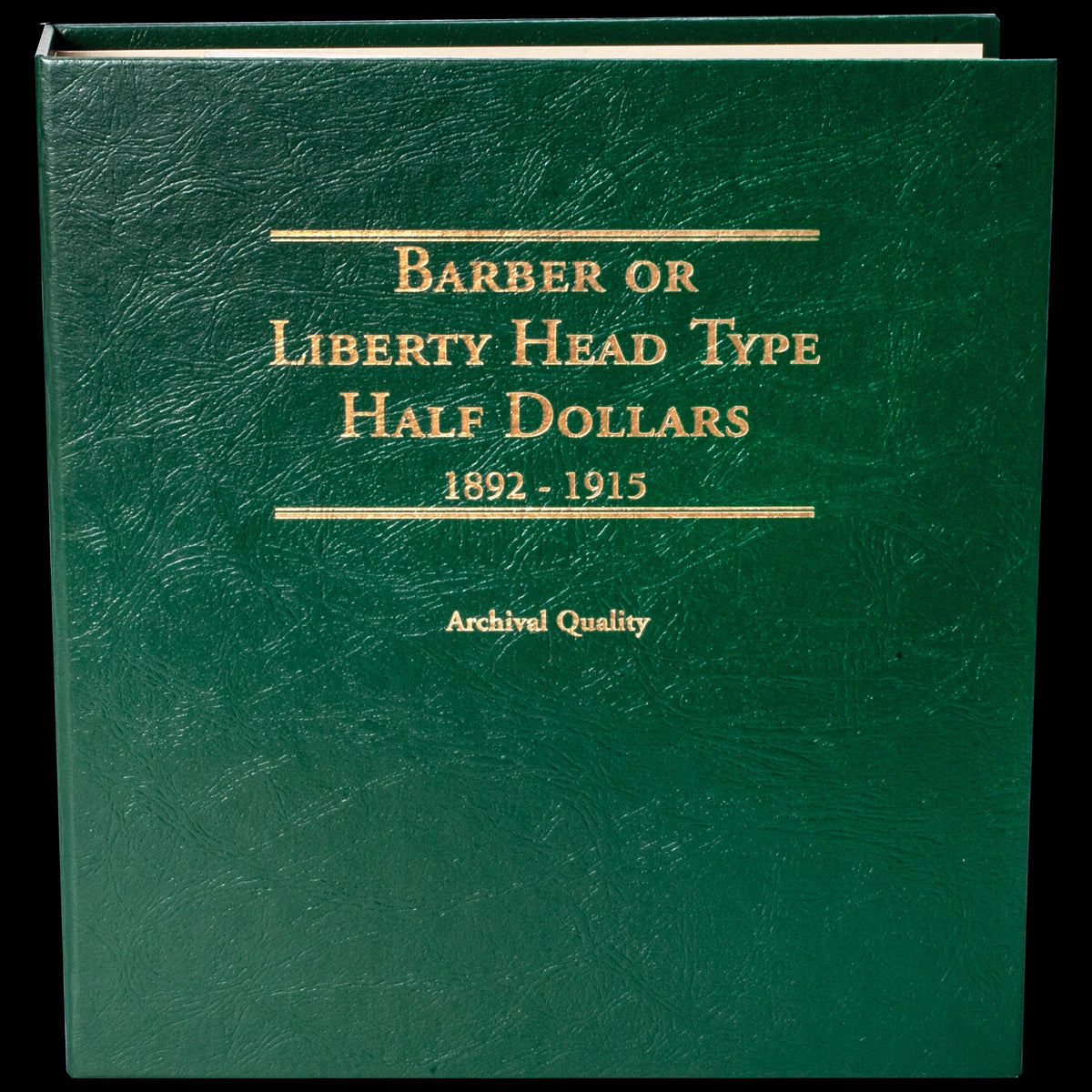
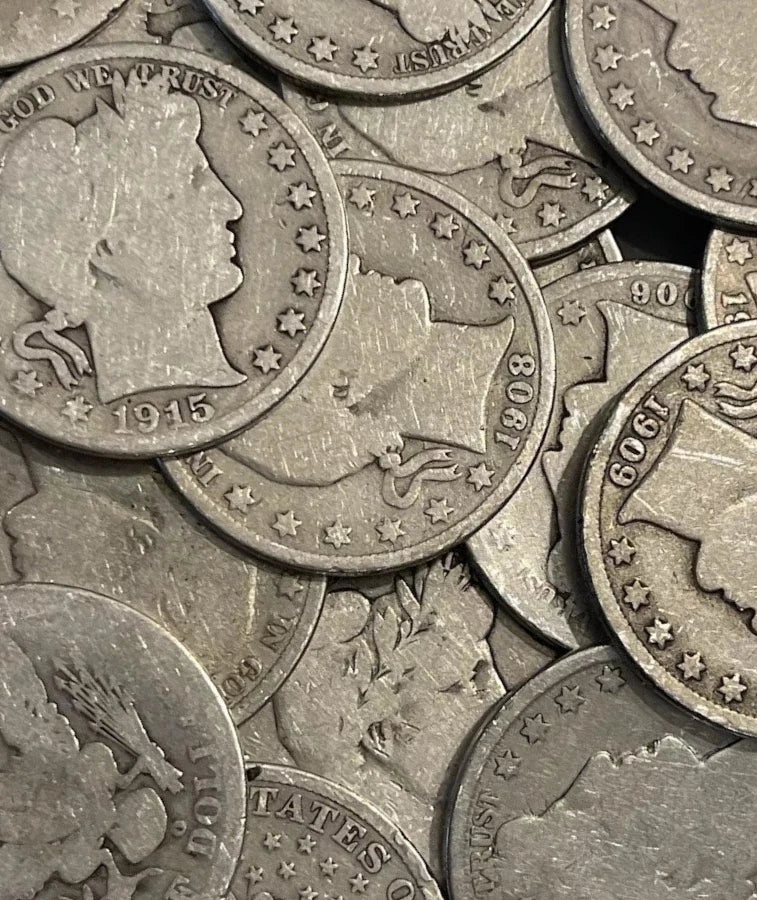
Historical Significance
This coin represents the currency of the American Industrial Era, and its uniform design set the benchmark for subsequent coins.
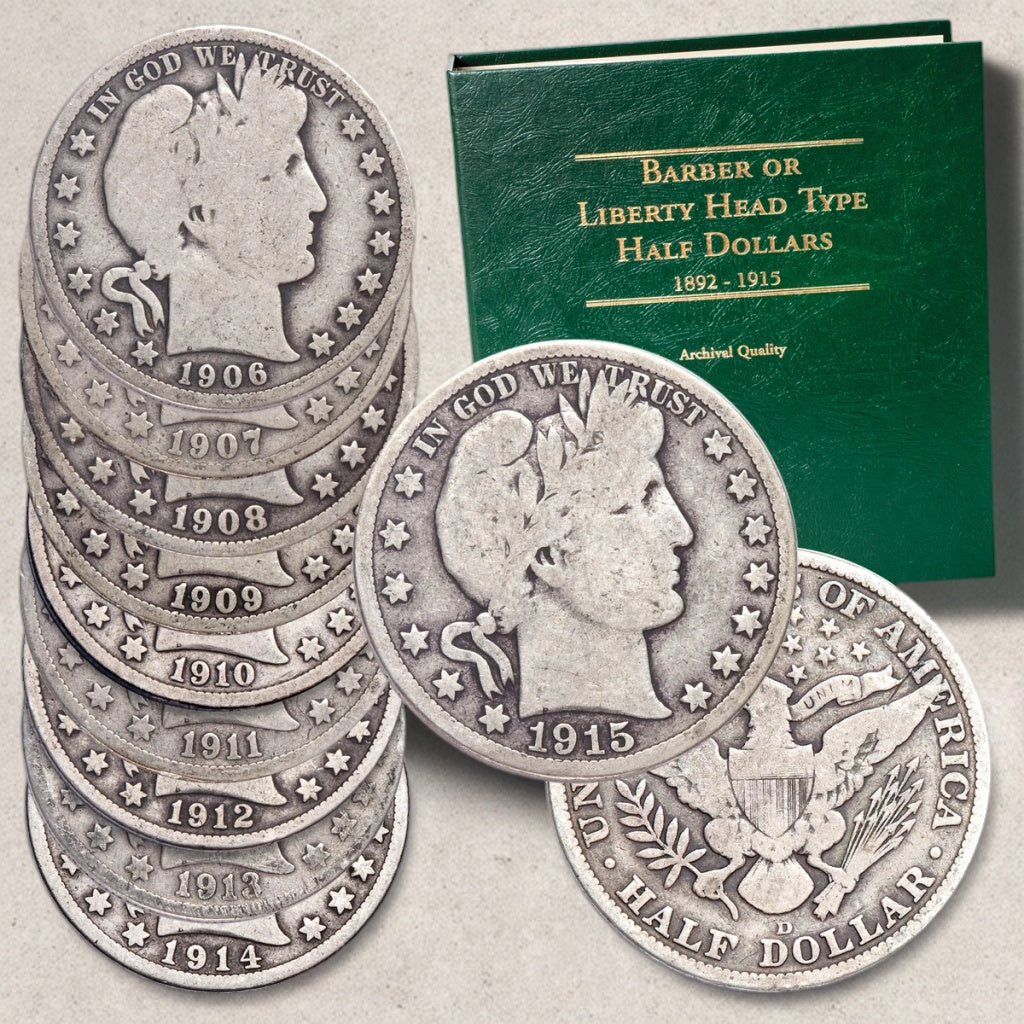
Historical Background
- Issued from 1892 to 1915, it was the core circulating silver coin of the United States during the late 19th and early 20th centuries.
- Designer: Charles E. Barber, Chief Engraver of the United States Mint, who also designed the Barber dime and quarter of the same period.
- Name: Named after the designer's surname, it is also known as the "Liberty Head Half Dollar."
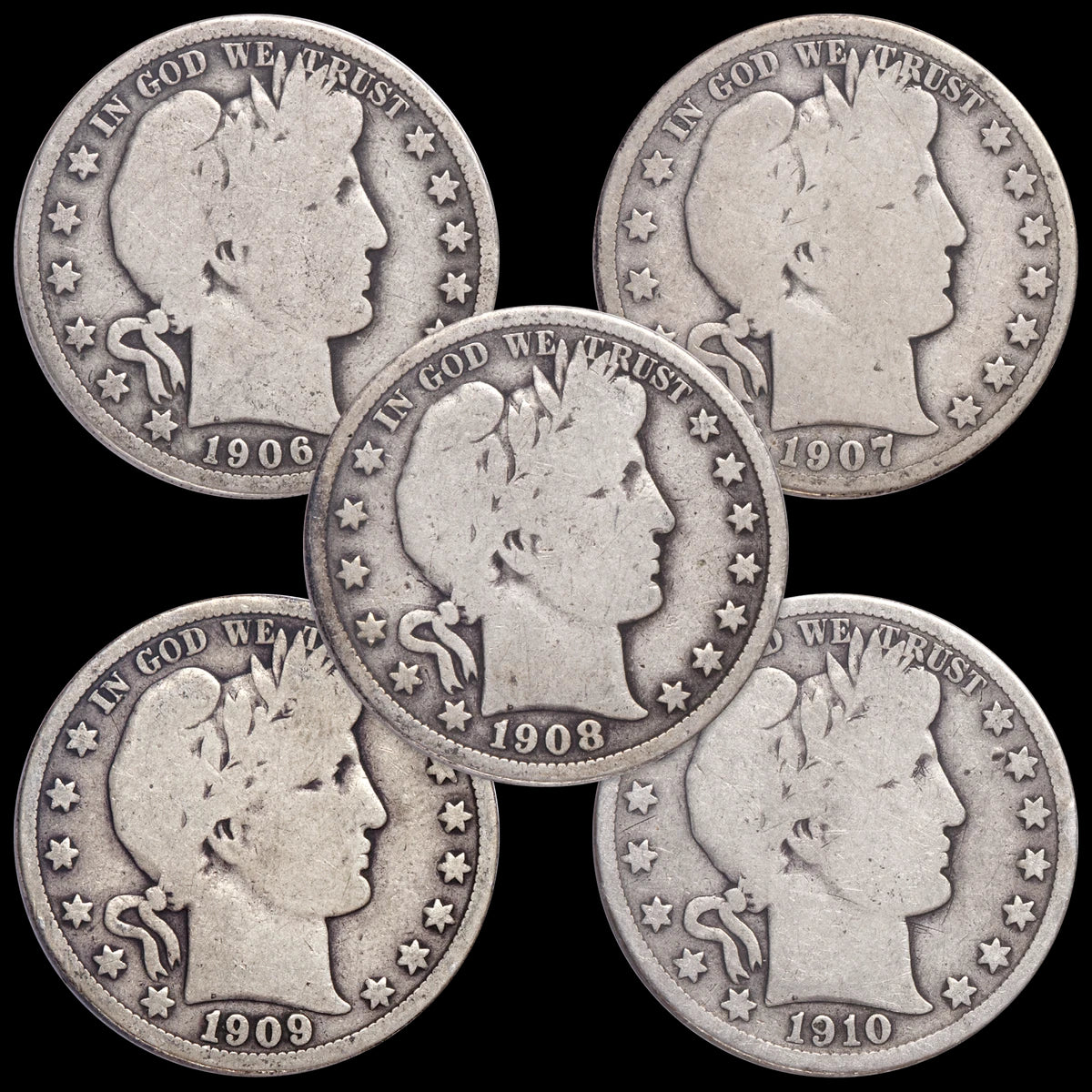
Obverse: Statue of Liberty's Head
- Design: A portrait of Liberty, wearing a laurel wreath, with "LIBERTY" inscribed on the wreath and the year of minting below.
- Details: The goddess's long hair is tied with a band at the back of her neck, and her facial features are dignified, reflecting the neoclassical style.
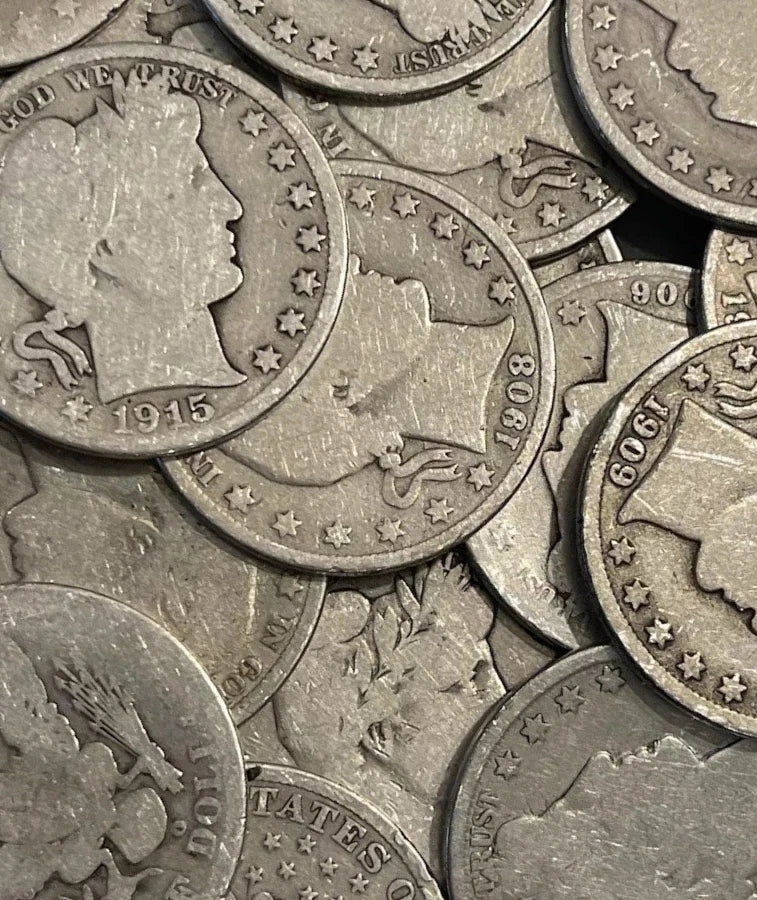
Reverse: Heraldic Eagle
- Core element: A bald eagle with outstretched wings, holding an olive branch in its left talon (peace) and three arrows in its right talon (defense). The shield on its chest is decorated with 13 vertical stripes (symbolizing the 13 founding states).
- Inscriptions: "UNITED STATES OF AMERICA" on the upper band, "HALF DOLLAR" on the lower band.
Real Owners, Real Wins
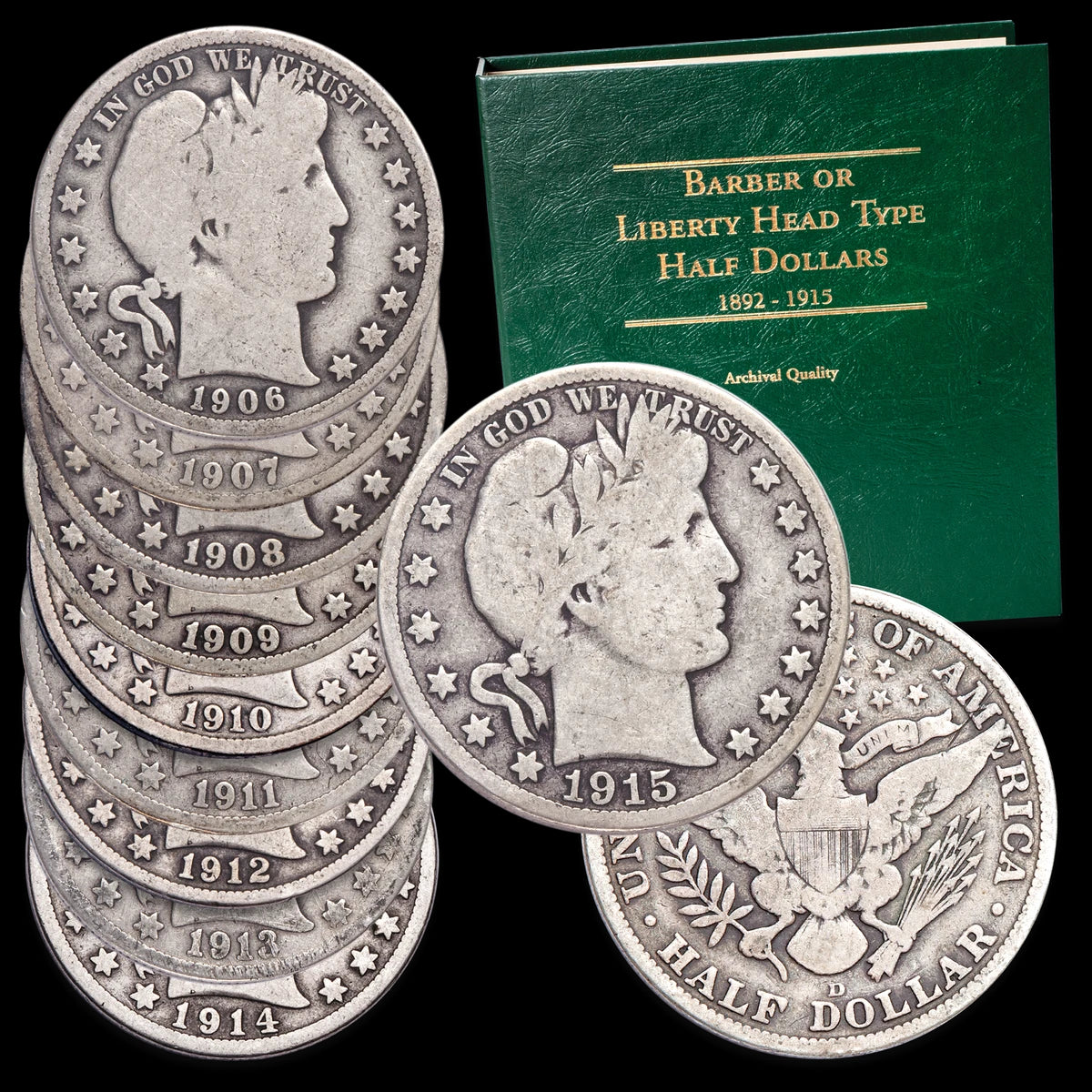
90%
Last Chapter of Silver Coin Heritage
90%
VG Condition: Affordable Clarity
90%
Complete Decade Set: No Missing Dates
Data from independent surveys of 500+ buyers. Learn more about our authenticity guarantees.
FAQS
What years and condition are included in this Barber Half Dollar set?
What years and condition are included in this Barber Half Dollar set?
The set contains 10 coins spanning 1906–1915 (one per year) in Very Good (VG) condition. Each coin features clear date markers (e.g., 1906, 1915) and intact core designs (Liberty’s head, eagle reverse), with normal wear consistent with circulated coins from the early 20th century.
What metal content and value do these coins have?
What metal content and value do these coins have?
Each Barber Half Dollar is composed of 90% silver and 10% copper, containing 0.3617 troy ounces of pure silver per coin. With 10 coins, the set offers 3.617 ounces of total silver—combining intrinsic precious metal value with numismatic appeal as historic U.S. currency.
What does the "Archival Quality" green album include?
What does the "Archival Quality" green album include?
The green album labeled “Barber or Liberty Head Type Half Dollars 1892–1915” is designed for long-term storage, with acid-free pages to prevent tarnishing. It includes labeled slots for each year, allowing organized display of the 1906–1915 coins while protecting them from moisture and scratches.
Why is the 1915 coin significant in this set?
Why is the 1915 coin significant in this set?
The 1915 Barber Half Dollar is the final year of the series, marking the end of Charles Barber’s iconic design before it was replaced by the Walking Liberty Half Dollar in 1916. This makes it a key "bookend" coin for collectors, symbolizing the transition in U.S. silver coinage history.
